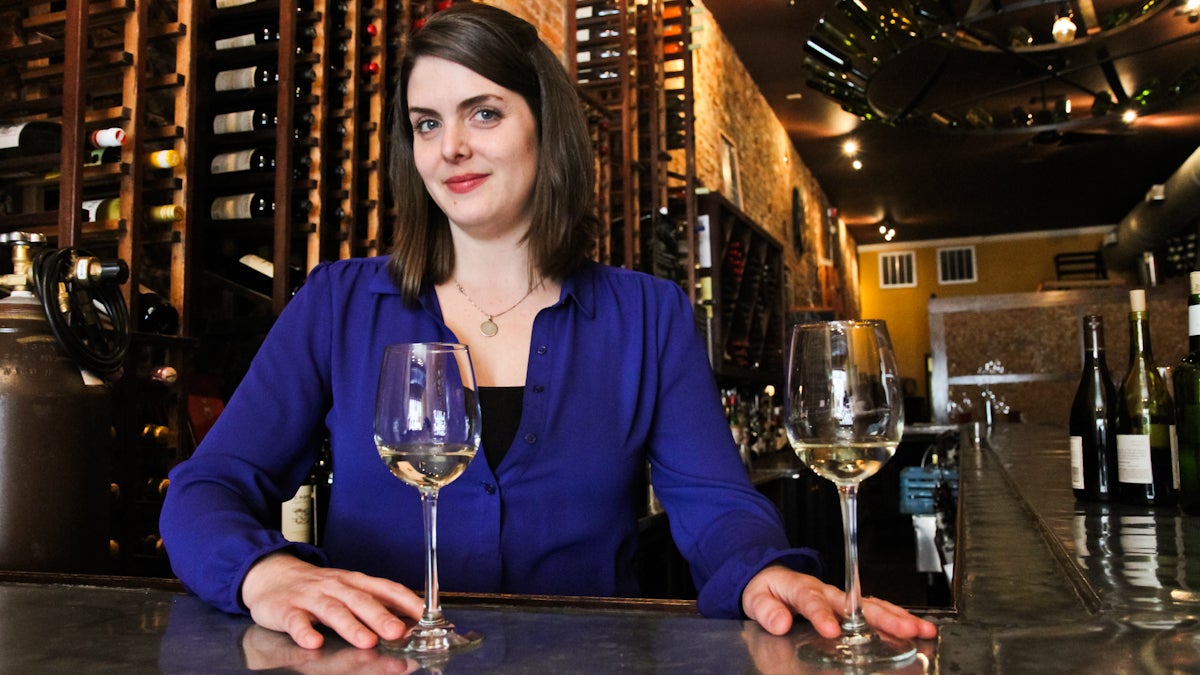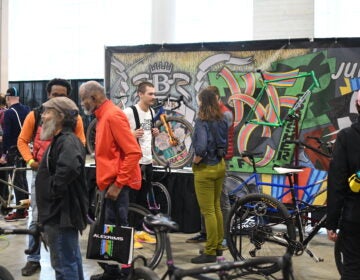Handy-dandy Philly Wine Week glossary [audio]

Kate Moroney-Miller, Wine Director at Vintage Wine Bar & Bistro and co-founder of Philly Wine Week (Kimberly Paynter/WHYY)
The third annual Philly Wine Week kicks off Sunday with more than 150 events at 55 locations.
This means many of your favorite restaurants will offer tastings, pairings, and educational sessions throughout the week, Sunday to Sunday, from April 3 to April 10.
But before popping the cork on this year’s festivities, Kate Moroney-Miller, Wine Director at Vintage Wine Bar & Bistro and co-founder of Philly Wine Week, sat down with Plated to talk about some of the lingo we may encounter along the way (full audio below).
“The terminology — the wine terms — that are used regularly are really intimidating and a lot of times people end up smiling and nodding,” Moroney-Miller said. “A little blank stare, occasionally.”
Which is why Vintage will be hosting a ‘Learn Your Lingo’ tasting event on Tuesday April 5, at 6 p.m.
“The best way to learn is to do a side by side comparison,” she said. And having a pro like Moroney-Miller help us with the verbiage is pretty helpful, too. So without further ado, here’s a quick tutorial of some of the wine terms you may hear along the way.
Acidity — younger, unoaked wines will have higher acidity levels. Aged or oaked wines will have a lower acidity level. Acidity and salt love each other.
Bordeaux (white) — If you see a white wine in the French section that says Bordeaux on, it it is a Sauvignon Blanc, and generally food friendly.
Fruity — Both red and white wines can be fruity. Fruity red wines typically give notes of dark fruits like plums, cherries, strawberries or blueberries. Fruity white wines give off flavors similar to some light colored fruits, like apples, citrus, or peaches.
Oaked — The motherland of oaked Chardonnay is California. The wine is aged in oak barrels which changes its flavor and lowers the acidity. Oaked wine will have notes of baking spices, or buttered popcorn, and a woodyness, like baked apple pie. To really taste it, try a side-by-side tasting of oaked and unoaked.
Sweet — The sweetness of a wine depends on when the grapes are harvested. The longer the grapes stay on the vine the sweeter the wine will be. Sweet wines will taste juicer and likely coat the tongue and the inside of the cheeks.
Terroir (pronounced TE_WAHR) — Terroir embodies the differences in the winemaking process, like weather; rain, temperature, climate, wind patterns; soil types; the history of the region and the differences in winemakers’ styles. This can make two very different wines even if they are made with the same varietal. These components will translate the same grape into two different wines.
Tannins — Tannins are more of a textural element of wine. It hits you in the middle of the tongue and feels like all the moisture has been sucked out of your mouth in one fell swoop. Tannins live in the skins of the grapes. The thicker the skin or the grape, and the longer the skins are left with the wine during the winemaking process, the more tannins you’re going to have. It’s about the winemaker and how thick the skin is.
Unoaked — The grandmother of unoaked Chardonnays come from Burgundy, France. Many of these wines they are aged in stainless steel, or have little to no aging at all and are meant to be consumed quite young.The flavor will be crisp, clean, and bright. with notes of green apples, occasionally a little bit of brioche, or some lemon zest. These wines will typically have higher acidity levels.
Viscosity or weight — Wines with a higher viscosity tend to linger, both in the glass and in your mouth; coating your tongue and the inside of your cheeks. This is associated with sweetness/residual sugar.
As we said, it’s easier to tell the differences when you have side by side comparisons. Moroney-Miller’s recommendations: Order two glasses of wine at a time, and hit not one, but two events this Wine Week — one that you’re looking forward to, and one that’s out of your comfort zone.
The Wine Week website breaks down each day’s listings, making it simple to find an event to fit your fancy, your budget, and your schedule.
WHYY is your source for fact-based, in-depth journalism and information. As a nonprofit organization, we rely on financial support from readers like you. Please give today.




